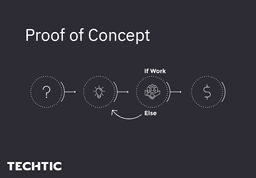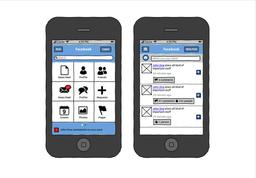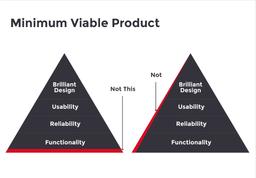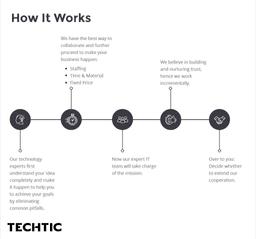Approaches To Validate Business Startup Ideas Through MVP
Sector: Digital Product
Author: Hemant Kumar
Date Published: 07/22/2019

Contents
Ideas and innovation are integral to the startup ecosystem. While there are several tools to gauge the performance capability of an application like PoC, Prototype, etc., the viability of an app idea can only be validated by building a Minimum Viable Product (MVP).
In this article, you can learn how the other idea assessment tools differ from MVP – along with proven case studies from Foursquare, Dropbox, and Tinder.
What is MVP?
Now, before we get to understanding MVP development for apps, let’s dedicate some brief moments to understand what an MVP is. While it sounds like tech jargon and is still a buzzword for many, the concept is pretty simple.
Now before you take your final product to the masses, you need to test the waters. You have to check if the product you’re building with the features and functionalities in mind actually works. That’s where MVPs come in. These are the minimum viable versions of your final product that users get to use and test. With its usage, your team generates data on what works and what doesn’t and uses MVPs as a validation tool before the final launch.
MVP Development for Apps: A Proven Tool to Validate Startup Ideas
With new apps mushrooming in the digital marketplace at a great pace, it is vital to hire a mobile app development company and develop an app that STANDS OUT and appeals to the users.
Despite testing the app and being utterly confident that your customers will love it, it is quite likely that the app does not perform as expected when it is actually launched. Therefore, you ought to validate your app idea in addition to analyzing the competition and current market scenario, right at the outset.
So, how will you validate the idea? The 3 most commonly used tools are:
1. Proof of Concept (POC)
Before introducing a product in the market, a POC helps to verify the feasibility of its development.

A POC not only shares information and stirs innovation but also allows you to figure out the time it will take for completion. POC includes research that has contributed to the conception of the app, and it is not necessary that the final POC should be free from bugs.
However, mobile app developers should clearly work towards revealing the functionality of the application.
2. Prototype
A prototype is a technique that sheds light on how the POC will be achieved. The prototype of a mobile app built by your mobile app developers will be a working and interactive model that will display the app navigation and its design, besides validating user flows.
Of course, there would be loopholes in the process, but the purpose to hire app developers is to identify these flaws in this initial stage so that the final product imparts a smooth experience to the users.
Here’s an example of a prototype of an app.

3. Minimum Viable Product (MVP)
Minimum Viable Product or MVP, as the name suggests, is a minimal form of the app that gets tested in the market. 42% of companies fail because of a lack of market needs.
An MVP allows you to evaluate the market need and potential and sheds light on how your prospects will perceive your product.

How are POC, Prototype, and MVP Different from Each Other?
Consider an example of the popular sharing platform Dropbox. Here we take 3 scenarios if we are to consider Dropbox as a POC, Prototype, or Minimum Viable Product.
1. POC
As a POC, they can present research that states:
- 54% of employees transfer business documents and data with the help of their personal email.
- On average, employees store 2037 files in the cloud.
These two statistics make it quite clear that business owners would be looking for a secure file sharing solution. They can interview decision-makers from startups or small businesses to determine how challenging it is to transfer files.
2. Prototype
The prototype of Dropbox could be a design wireframe that depicts how the app will look like. You can upload it on a tool like Invision App and share it with the stakeholders. It will enlighten them about the usability of the tool and the basic features included therein.
3. MVP
The MVP will be a usable version of Dropbox which will offer the users basic file-sharing options. You can launch it to some of the people from the target audience and gather their feedback.
Subsequently, once you have the mobile developers for hire to seal up the iterations in the development process, you can launch it in the market.
Why MVP as the Best Tool for Idea Validation?
Out of all the three tools, MVP yields the best results and that too in the most cost-effective manner.
A Minimum Viable Product (MVP) is the fundamental version of an app with a minimum functionality. In simple words, it works as that ‘laboratory experiment’ guinea pig on which the market research is conducted.
Whenever an app is still in the phase of “ideation”, MVP will help to test your hypothesis and iterate the features according to the feedback.
The next question could be how you determine if the MVP is suitable to the app.
6 Salient Features of a Successful MVP
- MVP should be focused on a single buyer persona. It works well when intended to solve the problems of one individual. You should always avoid building for multiple audiences.
- It should be easy to build and facilitate a faster launch.
- Despite building the MVP for a single individual, you should take into consideration several feedback. It is quite likely that diverse reviews can resolve most of the issues. Take the feedback more seriously if the reviewer fits into the target audience of your product.
- The minimalism of MVP does not imply that you expect more by putting in less effort. It should highlight the problems that can be solved with the app and how it can do so. This becomes all the more imperative if you have to overcome the competitive bottleneck in your market.
- It is not even remotely possible to monetize a failed MVP in spite of all the hard work. Therefore, MVP testing should be an important aspect of your development process.
- The objective of an MVP is to collect feedback and identify the shortcomings in the product. It is a prudent idea to limit the launch of MVP to fewer people.
That said, do you know how the dating giant Tinder gained such huge momentum?
Well, it began as a simple app where the user was supposed to tap a “heart” or “x” to express their approval or rejection. It required minimal technology to build this functionality.
Another example is Foursquare, the location data, and intelligence company. Their MVP or first version consisted of famous check-ins and badges. The design was plain and unattractive.
It was developed on an API on private beta, with exclusive availability in 20 cities of the U.S.A. and Amsterdam.
It’s interesting to know that most of the IT experts rejected the mobile application on seeing the MVP, but the simplicity and gamification strategy made it quite popular.
Presently, the app connects more than 50 million people who checked in 8 billion times.
That’s exactly how a good MVP Development works and aids the expansion of the app.
Advantages of MVP Development: How It Can Propel Growth for Your App
1. It is a cost-effective method of idea validation.
When you develop a full-fledged app with an attractive design and several features, the development cost soars higher. An MVP, although developed with limited resources, can still be called a product. It costs around $5000 to $10000 to develop one, while a full-fledged product will cost anything between $50,000 to $85,000 (which off course will make sense if you are sure of its market validation).
2. You can easily get paid customers from the existing user base.
It is a daunting task to attract new users without any paid advertisements or promotions. MVP is a good idea for startups who are looking forward to bringing new customers without expending more.
3. Feedback for the product can help you iterate and build a better product.
Customer reviews can let you understand how you should build the features of your app. That’s why developers usually build an MVP and seek feedback from the early users. It not only facilitates iterations before the big launch but also ensures that the product renders a flawless experience to the user.
4. It saves your time and effort.
The biggest nightmare for any startup is that the product does not get enough downloads when launched. By preparing an MVP and investing in receiving genuine feedback, it will save the developer’s time and also mitigate the likelihood of failure.
5. Getting funding becomes effortless.
An MVP, if done right, can bring investors to fund for your startup business. Building an MVP that aids in the monetization of the app is better than developing the final app that hardly gets any funds. You can approach platforms such as Kickstarter, Indiegogo, AppBackr, etc. to fund your apps.
Over to you…
Tons of people are talking about the effectiveness of an MVP and several successful entrepreneurs endorse its execution. Uber, Instagram, Snapchat, and several other apps started off with simpler functionalities and evolved to be huge successes- all thanks to the remarkable minimum viable product they crafted.

Your app can be the NEXT. Hire an MVP development company with proven experience in building a minimum viable product that helps you impress your target audience and investors alike.
Techtic Solutions has been in the forefront when it comes to offering strategic support to startups with not just mobile app development services, but also in guiding them with end-to-end MVP development across industry verticals from Travel, Chatbot, Healthcare, to Marketplace applications.
So, if are you ready to make the BIG move with a minimum viable product just like Uber, Dropbox, Foursquare, and other successful MVP example get in touch with our MVP expert. As you saw, developing an MVP is not an easy task. The whole purpose of building an MVP is to see if your product has takers in the market and its effectiveness when launched. So, a single flaw in developing one can break your company and its visions. That’s why having an MVP expert is crucial.
An MVP expert understands your business niche, competitors, similar products and considers several other parameters to develop the right MVP for your idea.
You can also hire MVP developers to work exclusively on your MVP project.
Latest Tech Insights!
Join our newsletter for the latest updates, tips, and trends.







